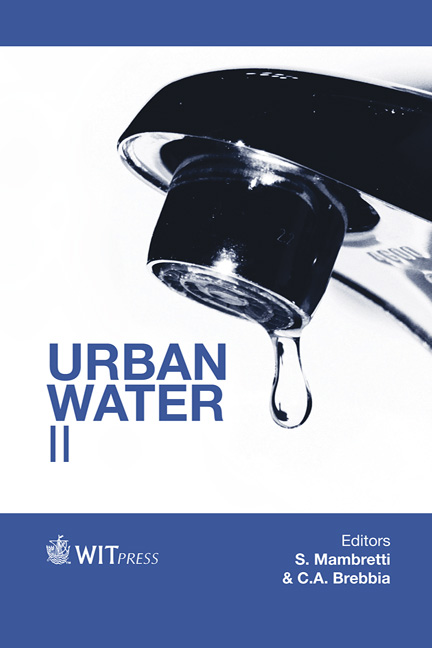Identification And Representation Of Water Pathways From Production Areas To Urban Catchment Outlets: A Case Study In France
Price
Free (open access)
Transaction
Volume
139
Pages
12
Published
2014
Size
784 kb
Paper DOI
10.2495/UW140211
Copyright
WIT Press
Author(s)
F. Seveno, F. Rodriguez, K. de Bondt & C. Joannis
Abstract
Hydrographic networks in urban areas combine several sources and water pathways, including buried channels and, more recently, source control practices. Moreover, pervious areas may be either directly or indirectly connected to drainage facilities and pipe water seepage. All these pathways have significant operational consequences since they challenge design principles, sizing guidelines and operating rules for both collection and treatment facilities, which might even undermine the efforts to improve the quality of receiving waters. The project proposed herein aims to generate a detailed description of the water pathways on an urban catchment in order to assess the impact of urban planning strategies and provide guidelines for sewer system evaluation and rehabilitation. The work presented in this paper has taken place within the Pin Sec catchment (Nantes, France); it consists of collecting and analyzing groundwater, wastewater and rainwater in the catchment and then applying the isotopic and chemical results to trace the mixing that occurs in the pipes. Results reveal that isotopic tracing is indeed relevant on this catchment. The isotopic signatures of drinking water and groundwater vary sufficiently during spring, up to 1.5‰ for δ18O and up to 12‰ for δ2H in May. The ratios of defective connections and water seepage may be deduced from this output. Chemicals also support the findings of the isotopic tracing results. Keywords: water stable isotope, major element chemistry, urban hydrology, tracing technique.
Keywords
water stable isotope, major element chemistry, urban hydrology, tracing technique.





